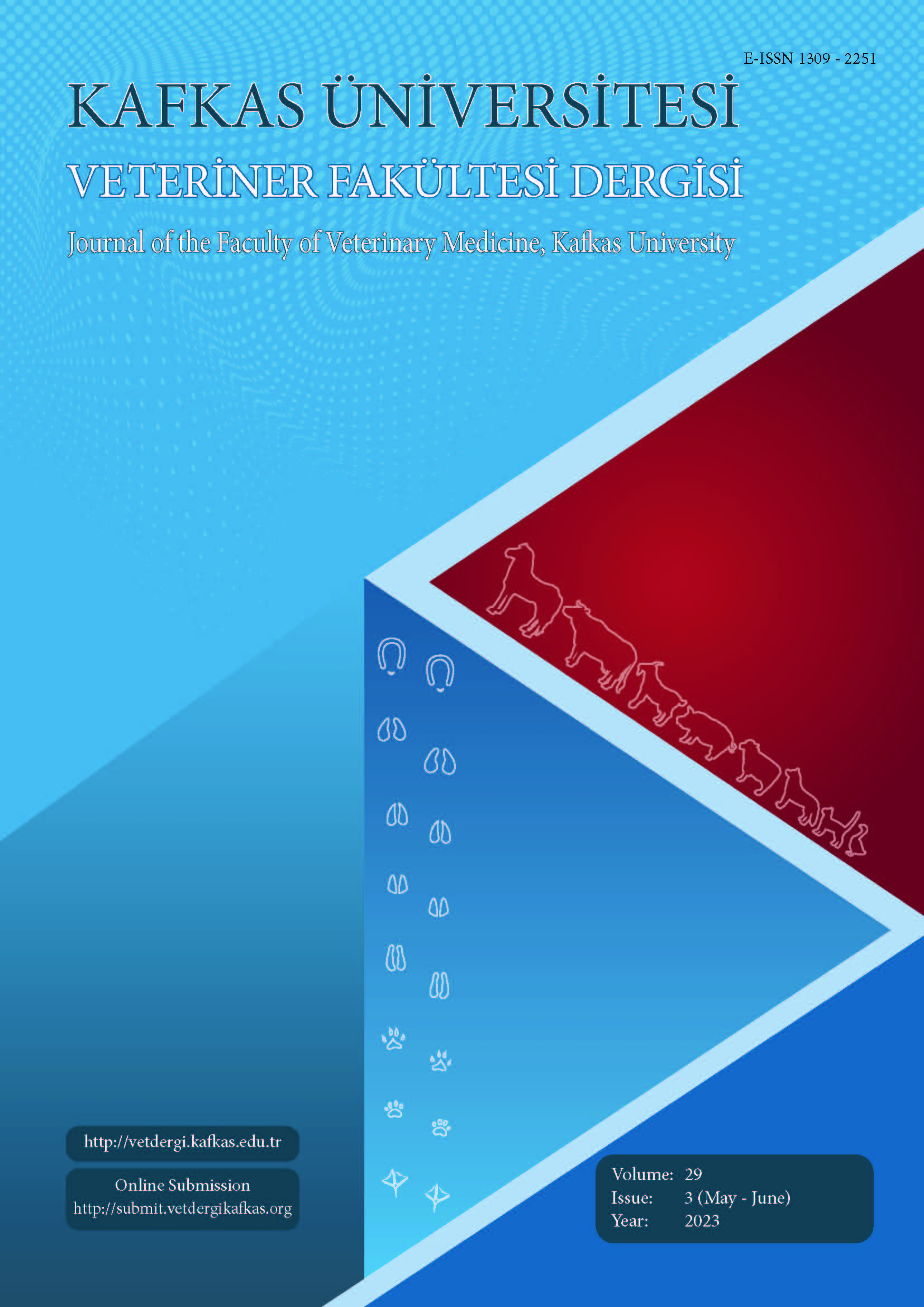
This journal is licensed under a Creative Commons Attribution-NonCommercial 4.0 International License
Kafkas Üniversitesi Veteriner Fakültesi Dergisi
2023 , Vol 29 , Issue 3
Strongyloides Infections Among Human and Non-Human Host in Indonesia: A Systematic Review
1Research Center for Veterinary Science, National Research and Innovation Agency, Bogor 16911, INDONESIA2Department of Nutrition and Feed Technology, Faculty of Animal Science, IPB University, Bogor 16680, INDONESIA
3School of Veterinary Medicine and Biomedical Science, IPB University, Bogor 16680, INDONESIA DOI : 10.9775/kvfd.2023.29241 Strongyloides have been known to infect many hosts, including humans and animals around the world. The two, S. stercoralis and S. fuellborni, were zoonotic species that cause human strongyloidiasis. The disease induces a hyper infection syndrome in an immunocompetence person, while the clinical signs of infections in animals vary from asymptomatic to sudden death in severe and fatal cases. However, integrated data on Strongyloides infection among human and animal hosts in Indonesia is sparse. The present study aims to provide information on the prevalence of Strongyloides concerning host type and geographical region in Indonesia. Literature searches were conducted to identify epidemiological data on the occurrence of Strongyloides in humans and animals from 1985-2022 in seven regions of Indonesia, including 1) Sumatra; 2) Java; 3) Kalimantan; 4) Bali and Nusa Tenggara; 5) Sulawesi; 6) Maluku; and 7) Papua. The data were described and mentioned as percent prevalence and confidence intervals (CIs) of 95%. A total of 46 articles confirmed the Strongyloides infection in Indonesia during 1985-2022. The articles consisted of nine on humans (12 data) and 37 on animals (59 data). Human strongyloidiasis could be confirmed in five regions (Bali and Nusa Tenggara, Kalimantan, Maluku, Papua, and Sulawesi). Strongyloides infected some animal group hosts, such as pigs, ruminants (beef cattle, swamp buffalo, sheep, and goat), rodents, nonhuman primates (orangutan, lutung (Trachypithecus auratus), and long-tailed macaque), and others (rabbit, snake, and chicken) in different regions. This study provides the prevalence data on Strongyloides infection in human and animal hosts. The limited data on Strongyloides in Indonesia indicated that the disease is still being neglected and under-reported. More epidemiological studies with the improved diagnostic method are needed to determine the societal burden of the parasites. Keywords : Strongyloides, Indonesia, Human strongyloidiasis, Animal strongyloidiasis










